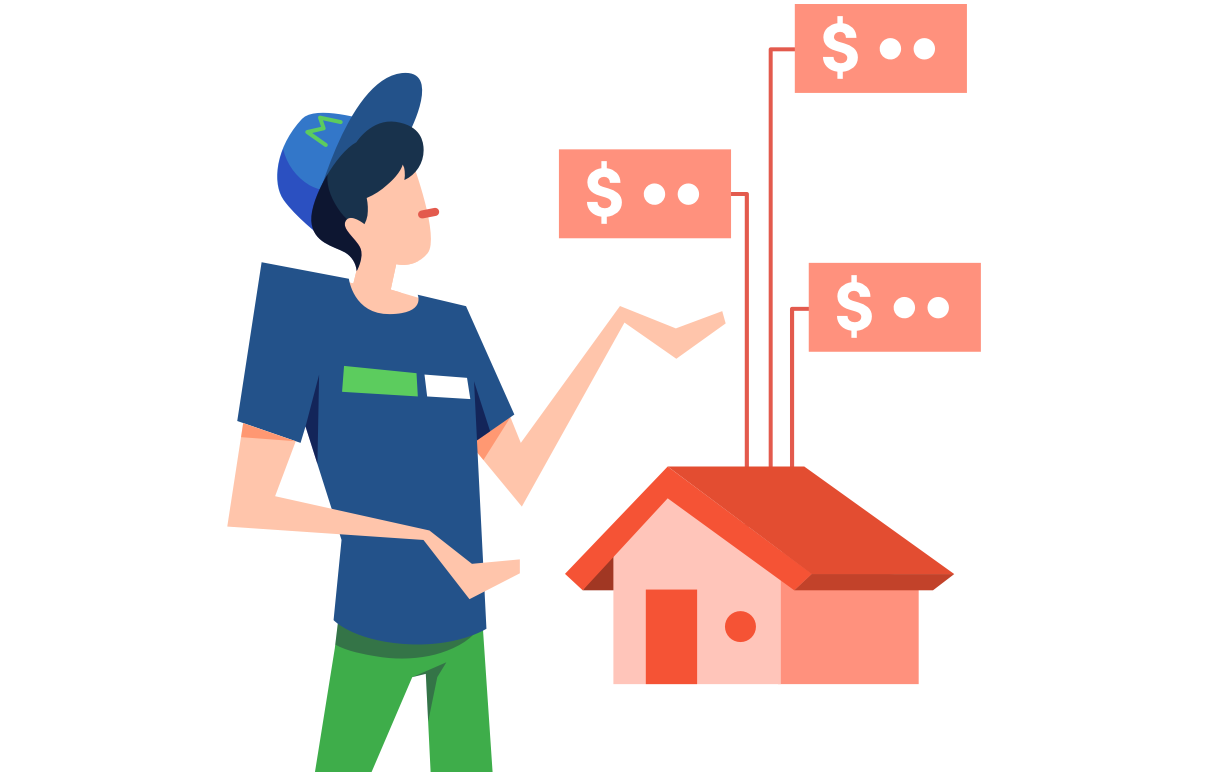Bridging Loan
If you’re in the midst of selling your property and buying a new one, you’ll most likely apply for a bridging loan to help you bridge the monetary gap. By signing up for a bridging loan, you’ll be able to raise capital and clear necessary payments for the new and/or existing property. In Singapore, it’s usually taken up by people planning to sell their old flat for an upgrade or a downgrade. While waiting for the sale proceeds, such loan can be used for the downpayment and other expenses related to the property transaction.

Compare All Singapore Home Loans & Apply Online
How to Apply for a Bridging Loan
At MoneySmart, we make the application process simple for you. All you have to do is provide us with your details, and we’ll take care of the rest. This means we’ll be checking all bridging loan packages available in the market, and give a recommendation that works best for you.
Eligibility and Documents Required
Given that a bridging loan is a type of loan designed to be paid within a short period of time, it’s important to assess your capacity to pay off the loan on time.
Eligibility
Singapore Citizens, Permanent Residents and foreigners who are in the process of selling their property in Singapore can apply for a bridging loan. To get an approval, it’s important to have a good credit score.
Documents Required
To kick start your application, you should be able to provide the Option to Purchase (OTP) document, which states that you have the exclusive right to purchase the said property. Your CPF withdrawal statements and outstanding bank loan statements will also be needed to be able to determine the proceeds that will be available.

Fees and Charges
Late Payment Fee
Depending on your bank, late payment fees usually range from 3-5%. Even though banks have a grace period of 15 days, you shouldn’t be too complacent because it will affect your credit score.
Things to Know Before Getting a Bridging Loan
Your Property as Collateral
Banks will be using your property as security for your loan repayment. So if you don’t want to risk losing your hard-earned investment, you need to make sure that you have the capacity to repay the loan on time.
Proper Property Valuation
As a golden rule, before you even think about applying for a bridging loan, you need to make sure that you’re not overestimating the amount you can sell the property for. You’ll be facing a serious headache if the property value is miscalculated.
Capitalised Interest vs Simultaneous Repayment Bridging Loan
The first type of bridging loan is Capitalised Interest. It covers the entire amount of the new home you’re planning to purchase. With this, repayments will only commence after you sell your old home. As such, you don’t need to pay for two loans at the same time. On the contrary, Simultaneous Repayment bridging loan works the other way around. You need to simultaneously repay your home loan along with the bridging loan, which can be quite burdensome.


Frequently Asked Questions
How much can I borrow from bridging loan?
- Bridging loans cover the remaining amount needed beyond the LTV you’re applying for. This means you can borrow up to 25% of the purchase price of the new property as long as you’ll have enough from the sale proceeds of your old property.
What is the interest rate on bridging loans?
- Compared to a standard home loan, bridging loan interest rates are much higher. It’s around 5-6% p.a., depending on the bank.
Are bridging loans a good idea?
- Whether you’re planning to upgrade or downgrade your current home, it’s important to weigh the pros and cons before jumping in on a short-term borrowing such as bridging loan.
Can I get bridging loan with a bad credit?
- Every bank has a different risk appetite. Applicants with a bad credit standing will be assessed thoroughly based on their credit report from Credit Bureau Singapore. Most of the time, applicants with poor credit history or undischarged bankruptcy will be denied.

